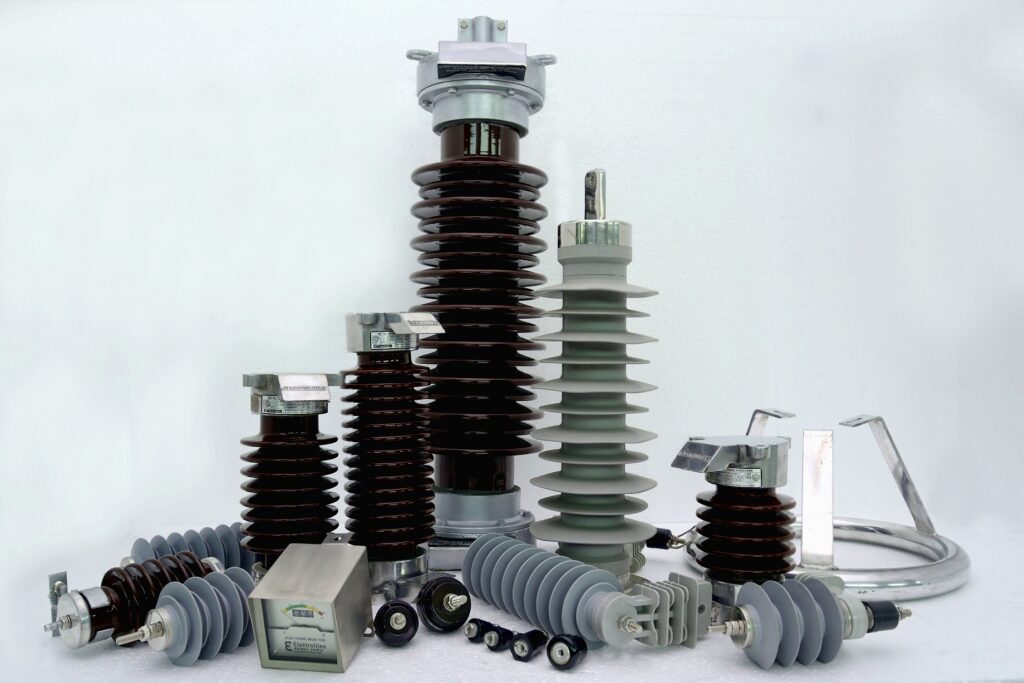
Wind energy in Peru is a significant renewable energy initiative that could reduce carbon emissions. The Caraveli wind project in Peru aims to harness strong winds in the region to generate clean electricity. This will contribute to the efforts on reducing the dependence on fossil fuels. The project recently achieved permanent occupancy easement from the Peruvian government. The project will install 36 turbines, which have a capacity to produce 220 MW. This will then integrate into the national grid, which provides energy access and reliability. The wind project will contribute to lowering greenhouse gas emissions by reducing reliance on thermal power plants. The wind energy project helps diversify Peru’s energy sources by adding wind power to the mix. Surge arresters protect the wind energy projects from electrical damage from lightning strikes and voltage surges.
High-quality surge arresters safeguard valuable equipment such as inverters, transformers, and generators from damage. Surge arresters help to reduce downtime and ensure the continuous operation of wind turbines. The arresters also provide protection for electrical equipment to ensure the long-term reliability and performance of the system. The Caraveli wind project faced several land acquisition challenges in the country. These include land ownership and rights issues, community land rights, environmental concerns, compensation, and logistical challenges. Addressing these challenges involves adhering to legal and environmental standards and fair compensation practices. This involved the use of surge arresters to reduce the risks of damage from voltage surges and lightning. Let’s look at the importance of using surge arresters and the benefits of the wind projects in Peru.
Relevance of surge arresters in wind projects in Peru
Surge arresters play a crucial role in protecting wind energy projects from electrical damage. The damage may be from voltage strikes and lightning and other electrical disturbances. They provide protection against electrical disturbances and ensure the safety, reliability, and longevity of the installation. The following are the functions of surge arresters in wind energy installations.

- Protection against lightning strikes – surge arresters help divert the high voltage from lightning strikes to the ground. This prevents damage to sensitive electrical components. Such components include generators, transformers, and control systems.
- Preventing overvoltage damage – surge arresters protect the electrical components in the wind turbines from overvoltage events. They limit the voltage levels and provide a safe path for excess energy to disperse.
- Grid stability and safety – wind farms connected to the electrical grid are susceptible to surges from the turbines into the grid. Surge arresters help maintain grid stability by preventing these surges from causing widespread damage.
- Control and communication system protection – surge arresters protect the control, monitoring, and communication systems within the wind turbines. These systems are important for managing turbine operations. Monitoring performance and ensuring safe shutdowns.
- Reducing maintenance and repair costs – surge arresters reduce the need for frequent repairs and maintenance. This leads to lower costs and reduces downtime to ensure the continuous generation of wind energy.
Benefits of wind energy development in Peru
The wind energy projects in Peru offer various benefits to the country’s energy sector. The projects contribute to sustainable development, energy security, and economic growth. Wind energy development diversifies the energy mix, supports climate goals, promotes innovation, and improves grid reliability. Using surge arresters in the installations helps in maintaining the reliability of the systems for the safe and efficient operation of the wind farm. TTF Power has established itself and continues as a world-class global supplier of high quality pole line hardware, overhead line steel structures, insulators, anchoring products, cutout switches, cables & conductors and grounding products. The following are the benefits of wind energy projects in Peru’s energy sector.

- Improved grid reliability – wind farms provide decentralized power generation that helps balance the electrical grid. Wind energy can complement other renewable sources like solar to help balance energy supply and demand.
- Energy access in remote areas – wind energy can provide power to remote and rural areas that are not easily connected to the grid.
- Technological advancements – the development of wind energy encourages technological advancements in renewable energy technologies.
- Stabilizing electricity prices – wind turbines have low operating and maintenance costs. This helps reduce electricity prices and volatility.
- Economic development – wind energy projects create job opportunities in construction, operations, and maintenance. The growth of the wind energy sector can lead to job creation in industries such as manufacturing, logistics, and services.
- Diversification of the energy mix – wind energy offers a new renewable source to Peru’s energy mix. This reduces the risk related to dependence on limited energy sources.